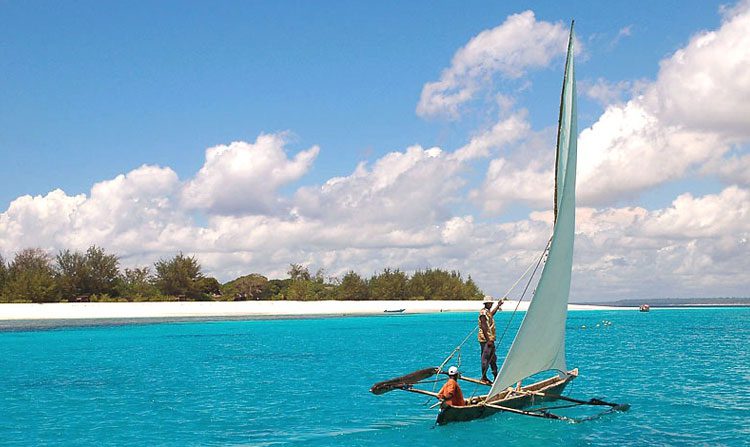Coastal Circuit Tour
The Coastal Circuit: This marks Tanzania‘s coastline of tropical palm fringed beaches. One has a chance to view underwater coral gardens. There is unlimited potential for deep sea diving and fishing.
Dar es Salaam: The metropolis on the coast. The commercial center of Tanzania. Has one of the finest natural harbors in the world. Inhabited by more than 2 million people and serving as a melting pot where many races, cultures, and different religions live in tranquility. The largest city on the East African coast.
Dar es Salaam was built by Sultan Seyyid Majid of Zanzibar between 1856 to 1870, who ruled the 16-km East African coastal strip. Dar es Salaam became the capital of German East Africa in 1891. Dar was also the capital of the British Administration in Tanganyika after the 1st World War. Became the capital of independent Tanzania up to 1973. It is today the de facto capital of the United Republic of Tanzania while Dodoma, in central Tanzania is the de jure capital.
Dar es Salaam has further:
An international airport known as Dar es Salaam International Airport (DIA) – DAR – Many international airlines land there.
Two important railway stations to the hinterland –
The Central Line Station – for the central line with 1,250 km from Dar es Salaam, on the Indian Ocean, to Kigoma, on Lake Tanganyika. The Central Line was built by the German administration, from 1905 to 1914.
The TAZARA Station – (Tanzania Zambia Railway) known as the Tazara line with 1,870 km from Dar es Salaam to Kapiri Mposhi (Zambia). The Tazara was built through a Chinese loan from 1970 – 1975.
Buildings represent the Arab era, the German and British colonial administration, for instance, the Old Boma, by Sultan Majid, St. Joseph Cathedral and the Lutheran Church along Sokoine Drive and the Old German Hospital along Ocean Road; and the imposing state house representing a German and British background.
Major port for connection to Europe, Asia, and a large hinterland – Zambia, Democratic Republic of Congo, Burundi, Rwanda, and Uganda.
Major port for connection to Zanzibar. Several hydrofoils and ordinary vessels … the waters between Dar es Salaam and Zanzibar.
Impressive places. The Askari Monument, the Museum, Nyumba ya Sanaa (House of Art) and the Makonde carvers at Mwenge.
Bagamoyo (Bwaga moyo = Lay down your heart): A historical part as the former gateway to Africa in the 19th century – many explorers started off into the hinterland from Bagamoyo – Burton and Speke as well as Stanley. Capital of German administration before Dar es Salaam.
One can see an old German Boma
There is the Museum of the Catholic Mission founded in 1868.
Pangani: A fishing village on the banks of Pangani river, representing a former rich Arab culture and prosperity along the coast. It is more Arabian in appearance.
Remnants of Arabic and Neo-Gothic buildings can be seen.
Beautiful beaches – described as a secret gem on the Tanzanian coast, and an oasis of surprise.
Mafia Island: Mafia archipelago of the mouth of Rufiji Delta. The word “Mafia” has nothing to do with the Mafia organisation. There are those who pay that the word comes from the Grab word “Morfieyeh” which means a group, and may be used to describe the group of 4 peaceful coral islands comprising the archipelago. It may also mean a place of good health (mahali pa afya) in the Kiswahili language
It is considered as a natural aquarium – rich in marine fauna.
A paradise for anglers.
Breathtaking palm beaches and azure blue waters.
Zanzibar: Lies opposite Bagamoyo i.e. 40 km across the Zanzibar Channel from the mainland. Zanzibar is comprised of two islands – Unguja (1,554 sq. km) and Pemba (906 sq. km). It is known as the Spice Island.
Used to be the center of East African slave trade.
Famous for the Stone town, representing Arab culture; quaint shops and bazaars; and its spicy cuisine.
Has famous Arabic buildings and palaces
Interesting flora and fauna – Jizani Forest – with a variety of red colossi monkeys; and Musingini Forest Reserve with a range of tropical trees.
There are slave caves at Mangapwani.
One can participate in the famous spice tour.
The Zanzibar airport where some international airlines do land.
Has a deep harbor – and both modern and traditional vessels do
There are beautiful white, sandy beaches.

